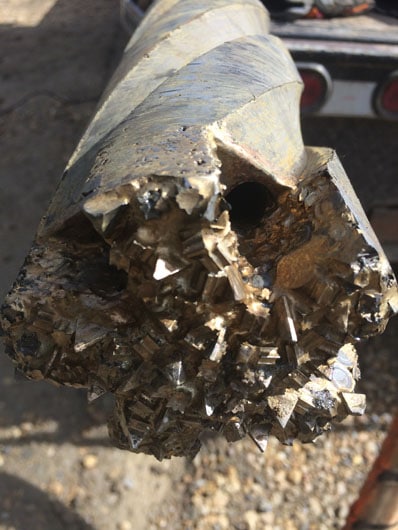Every coiled tubing operation requires some type of downhole tool that is usually supplied by third-party tool companies.
There are different types of tools used depending on the coiled tubing operation.
However, the main components of the tool or BHA are very similar to most downhole tools.
Here we will take look at the typical components of a milling BHA.
Related: How Coiled Tubing Milling Operations Are Performed?
Coiled Tubing Milling Bottom Hole Assembly Components
1. Coiled Tubing Connector
A connector is used to connect BHA to the end of the coiled tubing.
There are a few types of coiled tubing connectors such as external and internal.
2. Check Valve
The main function of the check valve is to prevent the backflow of liquids up the coil in the case of pressure loss due to coil damage.
3. Jars
Jars are often used when coiled tubing gets stuck at the bit.
When activated, jars provide an additional tensile force that can help with getting coil free.
4. Hydraulic Disconnect
The disconnect is used in case of emergency when the coil tubing is stuck downhole at the bit and nothing can be done to get it free.
When disconnect is activated, everything below it is left downhole.
The portion of the tool left in the well has to be retrieved later with a larger diameter string.
The disconnect is usually activated by pumping a special disconnect ball down the coil.
5. Circulation Sub
Circulation sub might be activated if fluid cannot be circulated through the bottom BHA nozzles due to obstruction.
From my personal experience, circulation subs are not very common due to reliability issues.
It is also not always clear at the surface whether the sub is open or not.
Related: What is Coiled Tubing?
6. Vibrational Tool (Agitator/Extended Reach Tool)
A vibrational tool is often used in extended-reach operations to decrease the friction coefficient between the coiled tubing and the casing and allow it to go deeper in the well.
There are a few different names used in the industry for extended reach tools such as agitator, vibrational tool, toe-tapper, water hummer tool, etc.
Most vibrational tools work by momentarily stopping the flow of water which creates a water hammer effect.
This pulse creates an axial force that allows coiled tubing to overcome friction and get deeper in the well.
Agitation tools are mainly used during the mill out operations because the debris created during milling add additional friction.
With the wells becoming longer there is a demand for more aggressive agitation tools that can help coiled tubing to get deeper in the well without pumping a lot of metal to metal friction reducer.
It is also believed that agitation tools allow a better clean out of the wellbore by lifting debris from the bottom of the casing when the coiled tubing vibrates.
Coiled tubing tractors are not as commonly used as water hammer vibrational tools but they can also allow coiled tubing to get deeper in the well beyond what is possible with just pumping metal to metal friction reducers.
7. Mud Motor
Since coiled tubing cannot be rotated like a drill pipe, a mud motor is used to provide rotational force to the milling bit by converting the power of fluid flowing through it.
8. Milling Bit
The milling bit is used for milling various obstructions in the wellbore.
Related: 18 Most Common Coiled Tubing Application
Other Common Coiled Tubing Downhole Tools
1. Clean Out BHA
Usually just made up of a connector, check valve, nozzle, and sometimes vibrational tool.
2. TCP guns
Used to create perforations in a casing before frac.
3. Fishing Tools
Used to retrieve lost pieces of equipment, tubing, miscellaneous objects dropped downhole, etc.
Come in various configurations depending on the type of object that needs to be retrieved.
Related: What Is Fishing In Oil And Gas?
4. Isolation Tools
Usually, come in the form of a packer and are used to separate a specific portion of the wellbore.
5. Camera Tools
Used to get a better understanding of downhole conditions such as casing deformation, perforations, etc.
Most camera tools have built-in memory and battery.
6. Logging Tools
Used to retrieve data about near-wellbore formation and casing/cement integrity.
7. Sleeve Shifting Tools
Some completion systems may allow for zone isolation with the closing and opening sleeves.
Sleeve shifting tools can latch onto the sleeve and open or close it as needed.
Read next: How Coiled Tubing Wellbore Cleanout Operations Are Performed?
